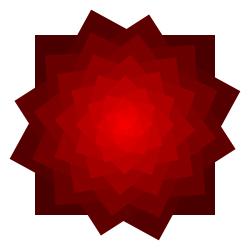Howdy, Stranger!
We are about to switch to a new forum software. Until then we have removed the registration on this forum.
Categories
- All Categories 25.7K
- Announcements & Guidelines 13
- Common Questions 30
- Using Processing 22.1K
- Programming Questions 12.2K
- Questions about Code 6.4K
- How To... 4.2K
- Hello Processing 72
- GLSL / Shaders 292
- Library Questions 4K
- Hardware, Integration & Other Languages 2.7K
- Kinect 668
- Arduino 1K
- Raspberry PI 188
- Questions about Modes 2K
- Android Mode 1.3K
- JavaScript Mode 413
- Python Mode 205
- Questions about Tools 100
- Espanol 5
- Developing Processing 548
- Create & Announce Libraries 211
- Create & Announce Modes 19
- Create & Announce Tools 29
- Summer of Code 2018 93
- Rails Girls Summer of Code 2017 3
- Summer of Code 2017 49
- Summer of Code 2016 4
- Summer of Code 2015 40
- Summer of Code 2014 22
- p5.js 1.6K
- p5.js Programming Questions 947
- p5.js Library Questions 315
- p5.js Development Questions 31
- General 1.4K
- Events & Opportunities 288
- General Discussion 365
In this Discussion
- Chrisir February 2018
- Chrissy101 February 2018
- jeremydouglass February 2018
- koogs February 2018
- TfGuy44 February 2018
Recreate this image using Loops (red squares)

How would I recreate this image using loops? How would I start it?
Thanks.

Answers
Attempt it yourself first, please. You can at least write the code for a dark square, right? Well it looks like there are smaller, lighter, rotated squares drawn on top of it.
Maybe you could use a looping variable to control the size, rotation, and color of the rectangles?
how can i rotate things so it will be in the center of each square?
A few things:
rectmode(CENTER);is a persistent drawing settiing - that is, you only need to call it once and it'll keep happening for all your rects.You have a call to
translate()in there that almost puts the origin of the coordinate system in the middle of your sketch already! Any calls torotate()would rotate about the origin.Here's a working example:
Do you see a pattern in there that could be better expressed as a loop?
@TfGuy44 Thanks, I can see that pattern but how do I translate it to a loop, like which section of the code do I look at? Can you explain it as easy as possible.
There's this crazy concept in programming about DRY code. DRY stands for Don't Repeat Yourself. The idea is that sections of code that do the same thing might all need to be changed in the same way, and it would be a pain to have to change the code in all the places where the same thing happens.
So Don't Repeat Yourself. Write DRY code. DRY stands for Don't Repeat Yourself. DRY means Don't Repeat Yourself. Don't Repeat Yourself. Basically, Don't Repeat Yourself. DRY. DRY. DRY DRY DRY DRY DRY.
DRY!
So if you see this:
You should weep. And then DRY your tears and instead write this:
And if you see this:
You should weep some more. Then DRY your tears and write this instead:
Why DRY? Because later if you actually wanted this:
It's much easier to just change this:
DRY! Don't Repeat Yourself!
DRY!
DRY? DRY!
If you see this:
Weep! DRY! Realize that you are doing these lines of code four time:
So right away you can stick it in a loop. A do it four times loop:
Oh right:
Of course you don't want SOME_VALUE! The first time the loop happens, you want the value of... UH.. #621C1C... color(92,28,28)... And for SOME_VALUES you want... well, start with the first size.
So start with that:
Next, how much does it change by? Well the color goes up to color(129,35,35), so you want 37 more red, and 7 each more blue and green?
And you want the size to go down by... 10? Okay:
And... Now it's in a loop. A very DRY loop.
DRY stands for DON'T REPEAT YOURSELF.
Thanks so much! I understand looping much more better! Hopefully, the next exercises I get from my prof. wont be hard!
The image is not exactly like the image but I'm happy with it!
"Match the image" isn't really a fair game anyway. Sometimes you can get lucky with the right values and approach. Sometimes not. Maybe the original image is triangles, or the rotation amount varies, or the transparency of the color changes, or... any number of things. Maybe you can get a closer match it the square shrink more. Maybe with more squares?
Play around with the values/code yourself!
My prof wants us to match the image, he marks by how close the sketch is to the image. But, I am happy with just understanding how to do it. Since i have a better understanding of loops now.
I think the initial image is a spiral
Each step, the square...
This happens over and over. So, can you guess what A, B, and C are by examining the image?
For example, is A 45 degrees, or less, or more? How much? Is B 1, or less than 1, or more? How much?
the angle and the size are measurable. the colour too, with a graphics package and an eye-dropper tool (and a better image - jpeg compression is lossy and can change colours of individual pixels)
(i think the angle's slightly less than 30 degrees given that the 4th largest square doesn't sit quite parallel to the outer square.)